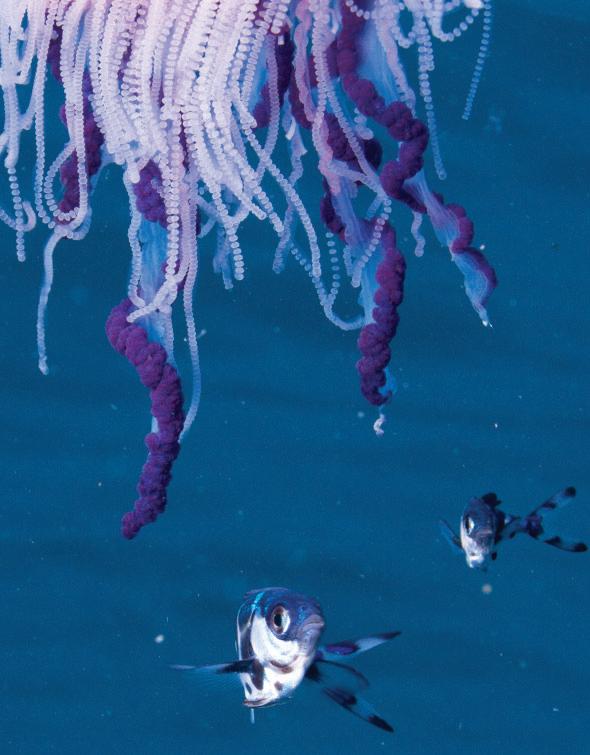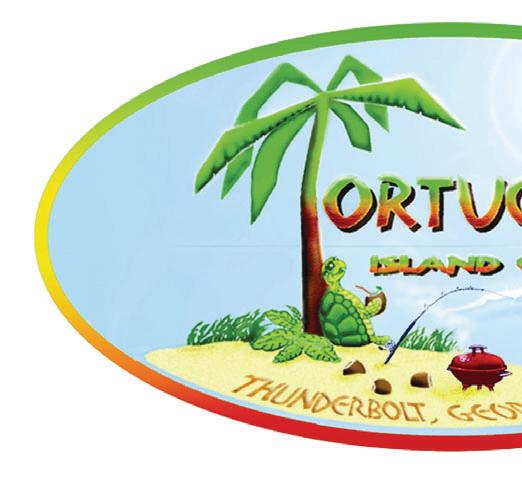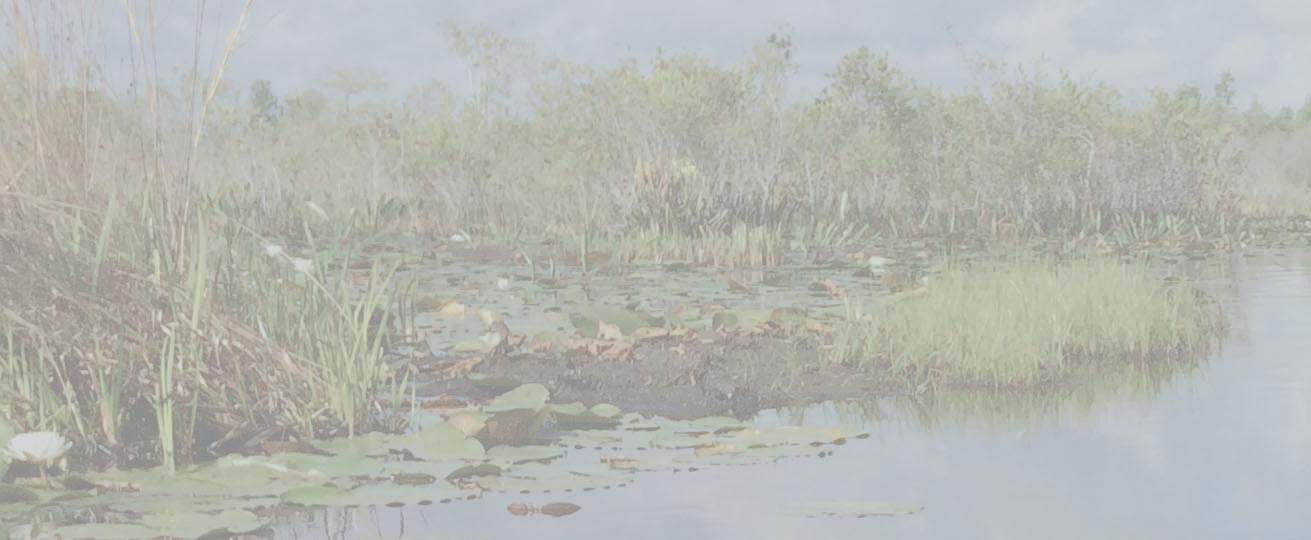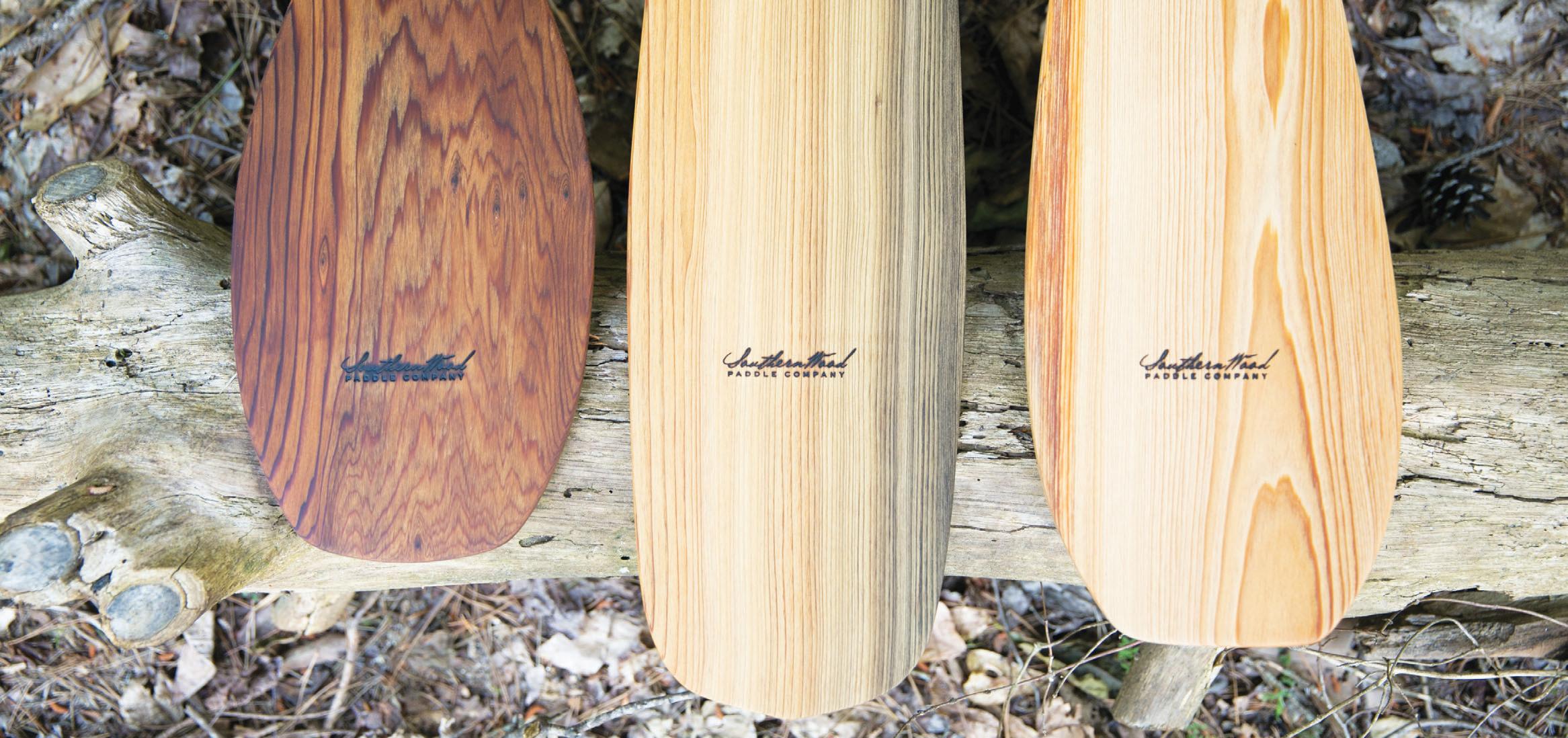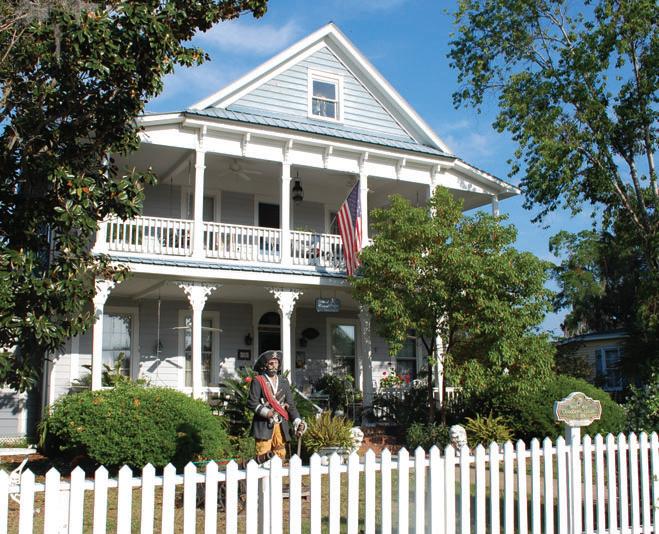
8 minute read
Paddling the Okefenokee 16
Article and Photos By Amy Thurman
This image: A large gator in the swamp ahead of us shortly after we set out. Judging from the size of his head, this one was fairly good-sized. As we drew closer, he sank below the surface leaving barely a ripple.
Advertisement
Below: Joy kept an eye out for wildlife while Chip told me about the diff erent fl ora and fauna we came across.
When I arrived at Okefenokee Adventures at 6:45 in the morning, heavy fog fi ltered my fi rst view of the swamp. The dark waters of the launch basin faded into a wall of gray nothing, leaving little indication of what might lie beyond except the ghostly outlines of trees. I love fog and hoped it wouldn’t fade before we got out into it, and I got my wish. Chip and Joy Campbell, owners and guides, had us on the water and paddling through the cool gray morning within 30 minutes. The basin leads out into the Suwannee Canal that was dug in the 1890s for drainage and logging, but now serves as a water trail for paddlers and for fi shermen in jon boats. As we paddled out we passed a couple such boats, with anglers catching warmouth and fl ier, but then seemed to leave them and the rest of civilization behind us. When you think swamp, do you think dark and eerie, moss and snakes dripping from trees, gators slicing into the water as you pass as if they’re stalking you, and mosquitos determined to drain you of blood? If that’s your expectation of a swamp, you might be disappointed by the colorful array of fl owering plants, expanses of bright open areas (called prairies), and the lack of snakes dropping into your boat or even mosquitos munching on you. Plenty of alligators, but they have less desire to interact with you than you do with them, and of course, plenty of Spanish moss. As we paddled along the canal, I was surprised by the lack of trees bordering it in one stretch. Chip explained that large areas of the swamp burned in wildfi res in 2007, 2011 and 2017. The open areas didn’t prevent us from seeing wildlife though. After seeing the fi rst gator of the day only about a quarter of a mile into our paddle, we also saw evidence of gator trails — paths running from the canal out into the wetlands. In addition to gators, we also saw 16
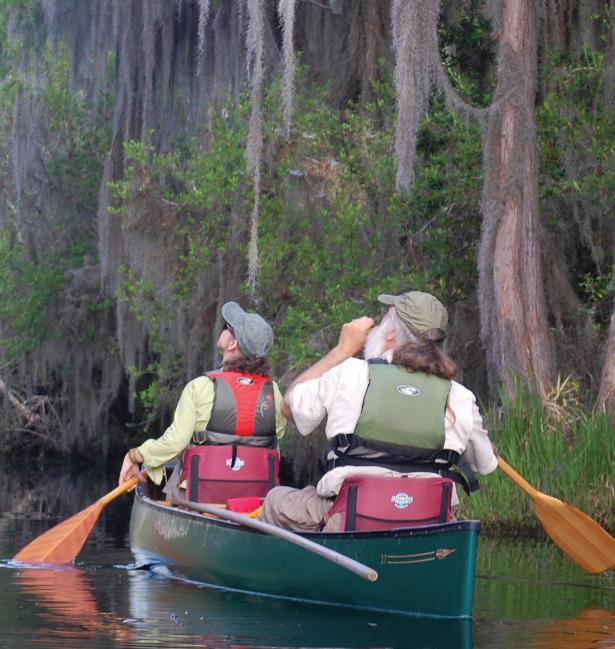
a white bird I took for an egret, but Joy and Chip explained that it was a juvenile little blue heron. Darker feathers were visible under the white and Joy explained that as the bird matured, he would lose his white feathers entirely, taking on a dark blue appearance – much more blue than even great blue herons. We also saw the nest of a pair of red-shouldered hawks with chicks being tended by their parents. It was just possible to make out three tiny heads peering down at us and I made a note to bring good binoculars on the next trip. The nest was in what I initially took to be a pine of some sort, but Chip explained was a pond cypress. Just as the fog was fully burning off we reached another wooded area, plentiful with this cypress. Having spent time on Ebenezer Creek, also blackwater, I assumed the dark tea-colored water of the Suwannee Canal was a result of tannins from the trees. Chip explained that was part of it, but that the dark color also comes from peat. When I hear “peat bog” I think of Ireland, but the Okefenokee Swamp is one of the largest peat bogs in the U.S. Peat is formed by thick layers of leaves and other dead vegetation that sink to the water bottom. As these layers decompose, trapped gases push the layers to the surface where they tangle with the roots of water lilies and other plants, holding them in place. Rich in nutrients, these fl oating masses are the perfect hosts for seeds from other plants and in time become nearly stationary beds of fl ora, called batteries.
We turned off the main canal into Chesser Prairie, a wide, open area with clearly defi ned water trails winding through huge expanses of lily pads and peat batteries. Water lilies were just starting to open for the day as we paddled alongside them and Chip pointed out a variety of plants sprouting on the batteries, including two species of orchids, bog buttons, ladies' hatpins, and more. Also growing all over the area we paddled that day was a water plant called neverwet. When water lands on the leaves, it beads up and rolls off , leaving no moisture remaining on the leaf. Scientists at Columbia studied the plant prior to creating GORE-TEX. And while that’s fascinating, I was far more intrigued by the neverwets because they provide something I always look for on my fi eld trips – edible vegetation! The yellow seed buds that sprout from these plants can be a food source (snack source) for humans. The smaller buds have a clean taste similar to a water chestnut, while the larger ones have a hint of licorice fl avor with a stronger, but not unpleasant, aftertaste. Thrilled with this discovery and satisfi ed with my samplings, I then caught up with Chip and Joy as we turned onto Tater Rake Run – a water trail that would take us back to the main canal. While paddling through the expanse of lilies and batteries of plant life, Chip pointed out several varieties of carnivorous plants that

Above: Refl ection in still water.
Below: A water lily opening with the sun.
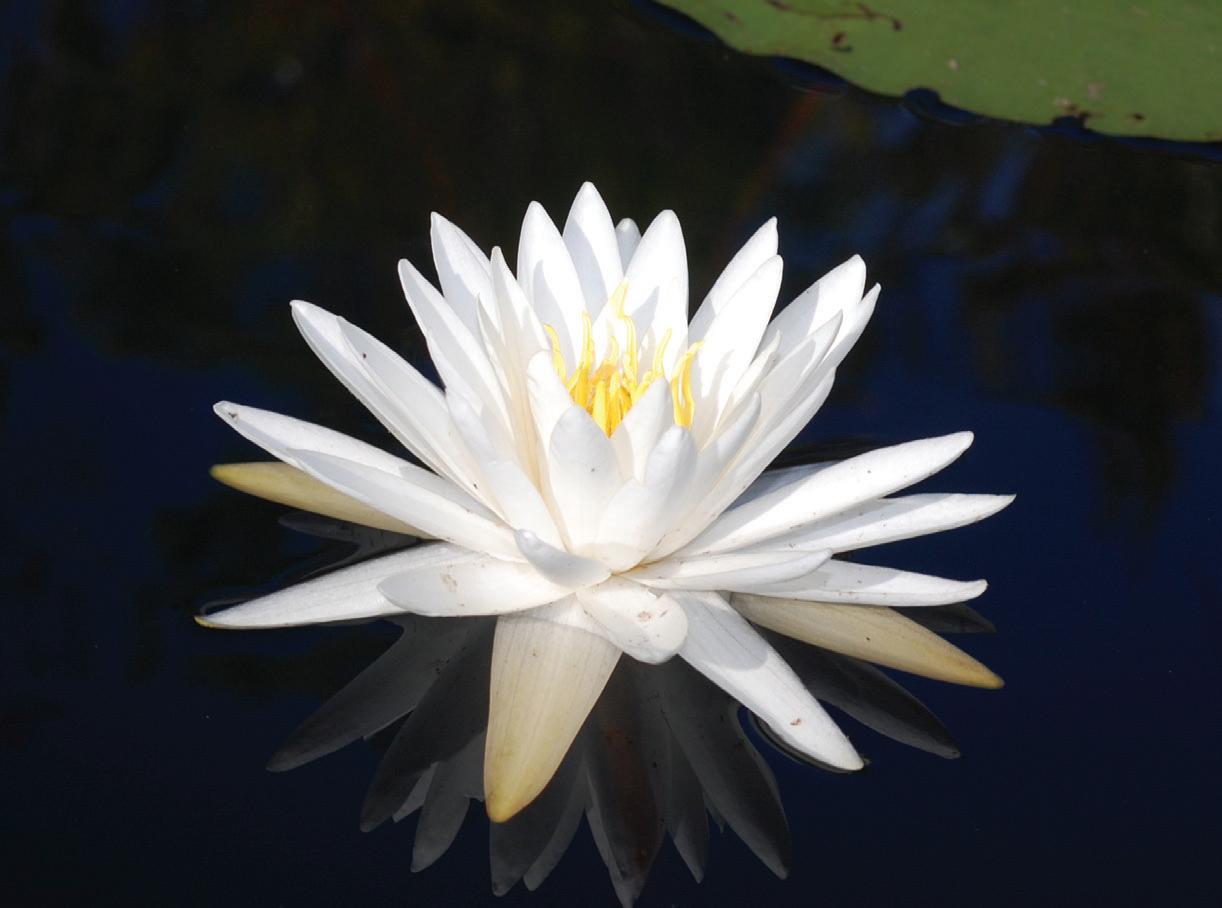

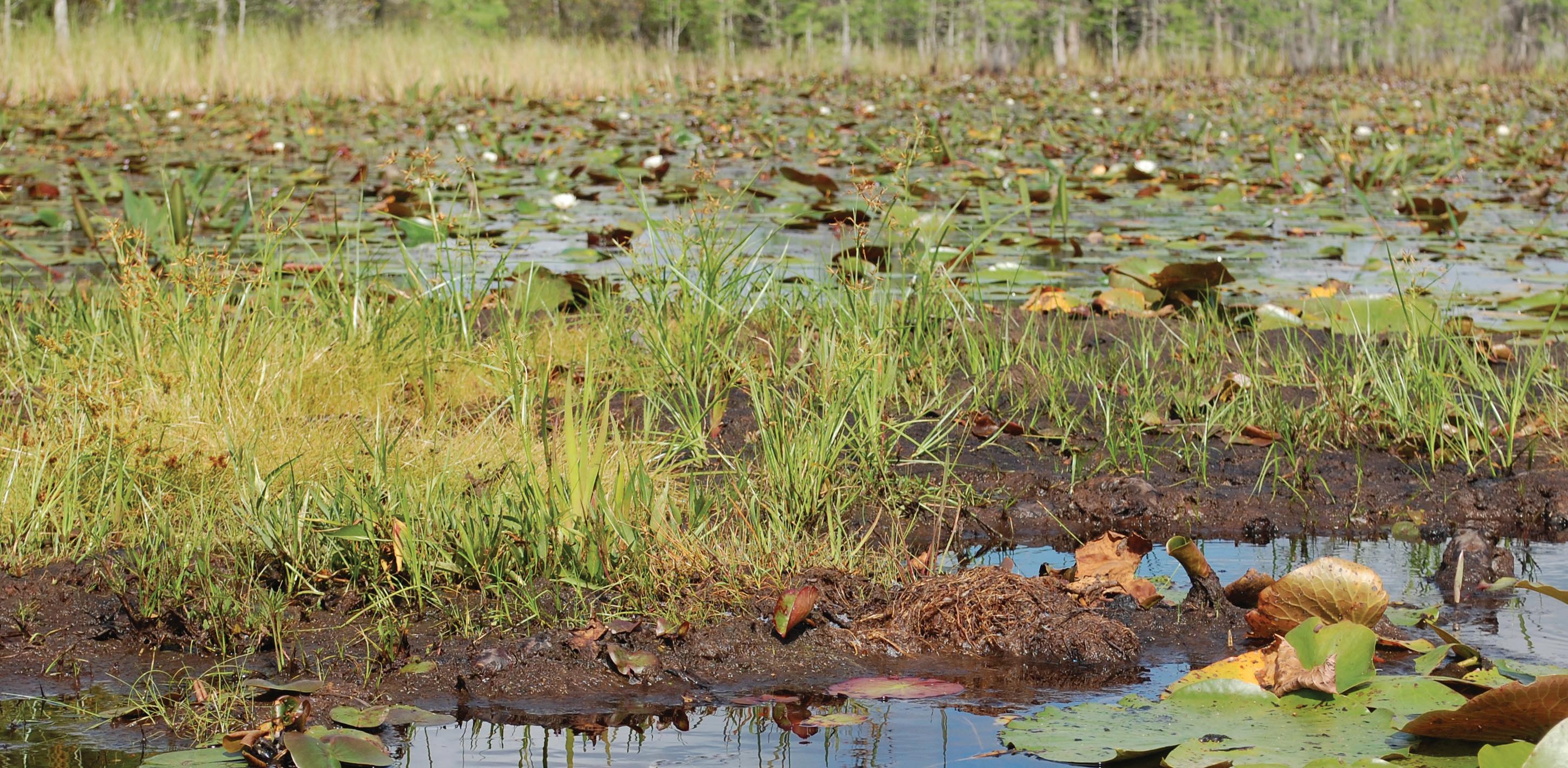
What appears to be a small muddy island is actually a battery — peat that has fl oated to the surface due to trapped gasses. Now anchored with the roots of lily pads and other aquatic plants, it's home to a variety of plantlife.
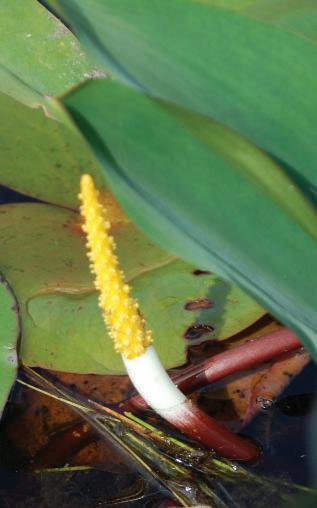
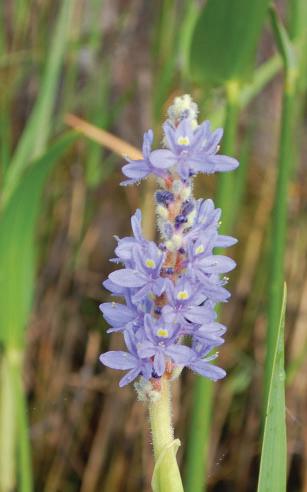
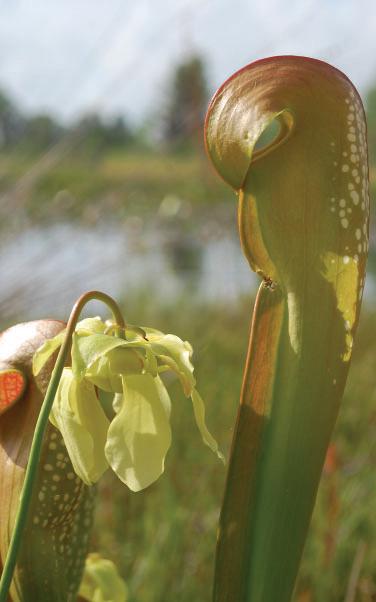
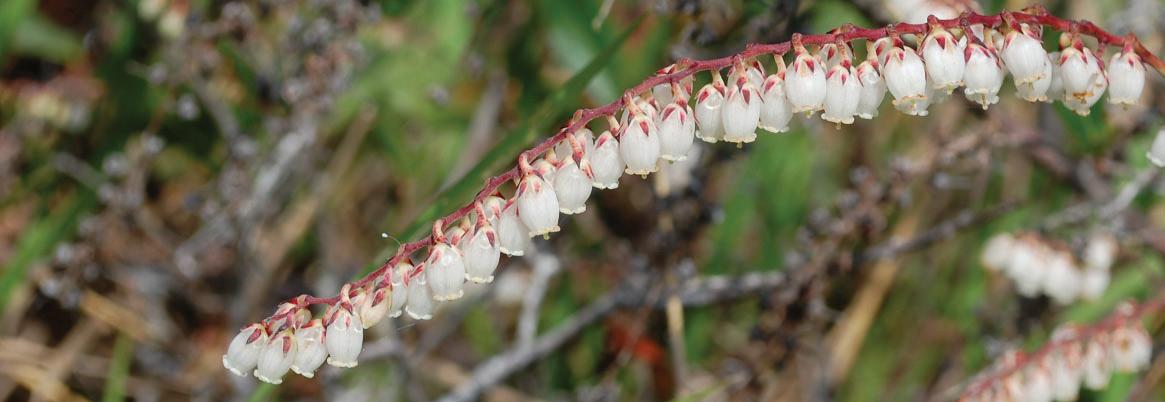
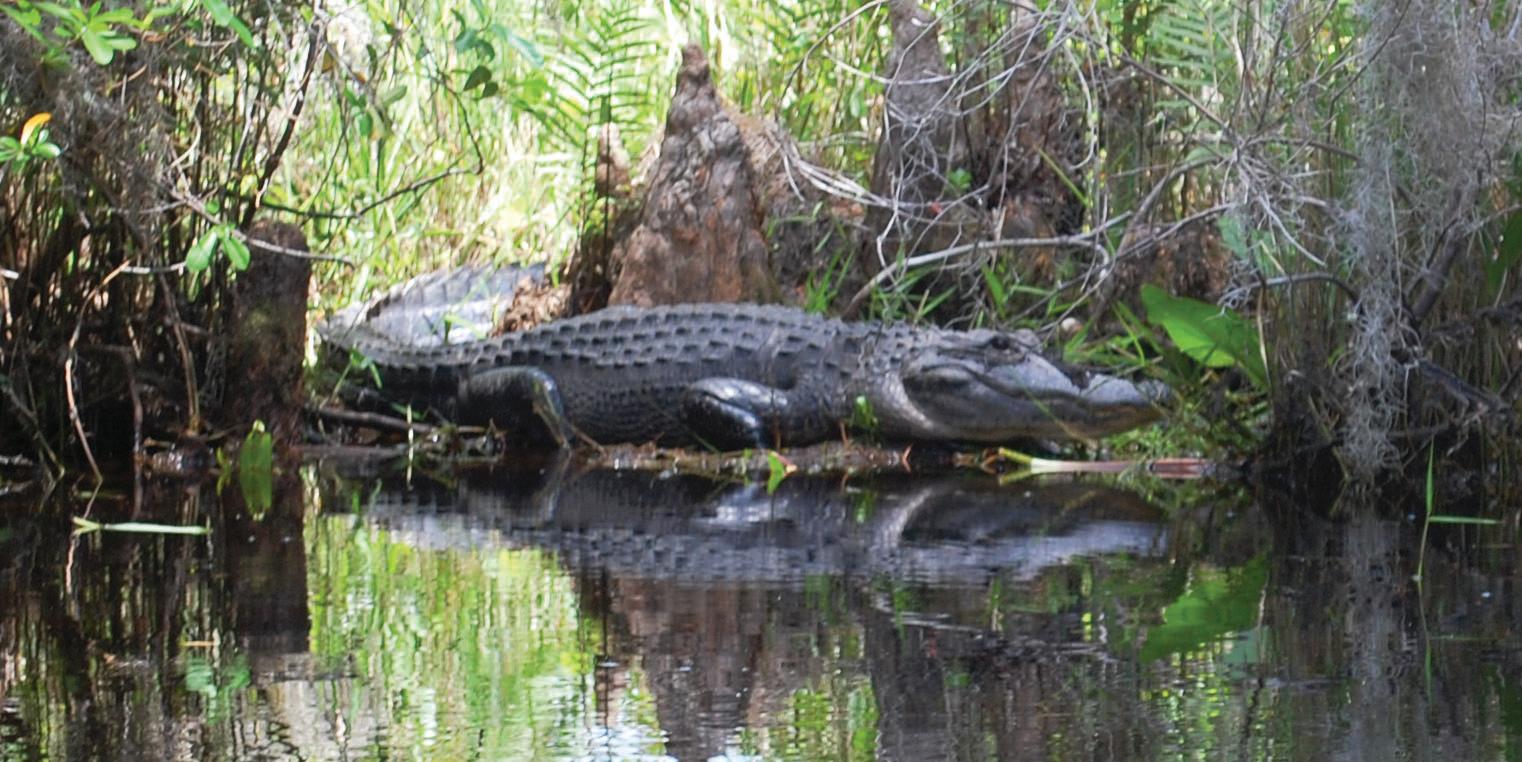
seem to thrive on their fl oating homes. From large pitcher plants to tiny sundews, these “meat-eating” fl ora, with the help of birds and frogs, seemed to keep the insect life under control. In seven hours in the swamp, I didn’t get bitten even once, though both Joy and Chip did state that during biting fl y season they advise guests to be back before it gets too hot and yellow fl ies start thirsting for human prey. Flies aside, it seemed to me there was a perfect balance to this unique freshwater ecosystem that’s rare in the modern developed world. While paddling Tater Rake, my guides and I discussed the impact of DNA testing on the animal kingdom, the sanitary and parenting habits of alligators, the origins of the fi rst canoes and kayaks, and birds being more closely related to reptiles than previously thought. Able to converse on most any topic, Chip is a knowledgeable naturalist and it was clear that the information he shared was not rehearsed or scripted – something few guides are able to carry off .
When we neared the end of Tater Rake Run, we decided to go deeper into the swamp so we could explore another leg of the canal that was more densely forested and covered – more like that mental image one might carry of what a swamp looks like. After paddling around a deep bend that veered north, we then entered that darker section. I immediately looked up to make sure no snakes were laying in wait on the branches that draped over our heads. Chip laughed and explained that he’s seen more snakes being carried off in the talons of birds than he has moving about in plain sight. “Things that don’t stay hidden, get eaten!” he said. This doesn't mean snakes aren't present, it simply means they aren't laying around in the open waiting for hapless humans. We eventually merged back into the main branch of the canal, then headed back to home base. Our total trip that day was about seven miles. Although it was easier than paddling against the current in our coastal tidal creeks, a breeze blew up and that last mile was challenging! Back on dry land, we headed inside where we ordered lunch at the café then sat and talked. After lunch I explored the gift shop and picked up a couple souvenirs (including an alligator brooch for my gator collection). Before saying goodbye, we made plans for a follow-up trip in October when we’ll explore the west side of the Okefenokee – maybe we’ll even get a chance to see some of the black bear population that live in the Refuge!
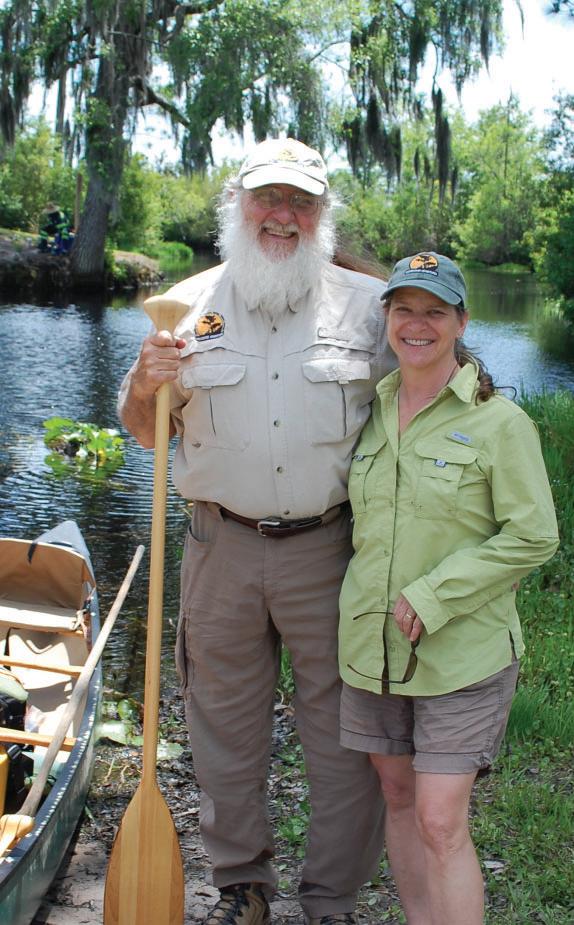
Many thanks to Chip and Joy Campbell and their staff for a phenomenal day and for all they do to share their love of the outdoors with others. Look for another article about the swamp this fall!
Opposite Page, Top, left to right: A tasty snack, buds from the neverwet plant. Compound fl ower of the narrowleaf pickerelweed. Bloom and tube of the carnivorous hooded pitcher plant.
Center: The small bells of swamp fetterbush.
Bottom: A large gator eyes us closely as we paddle by.
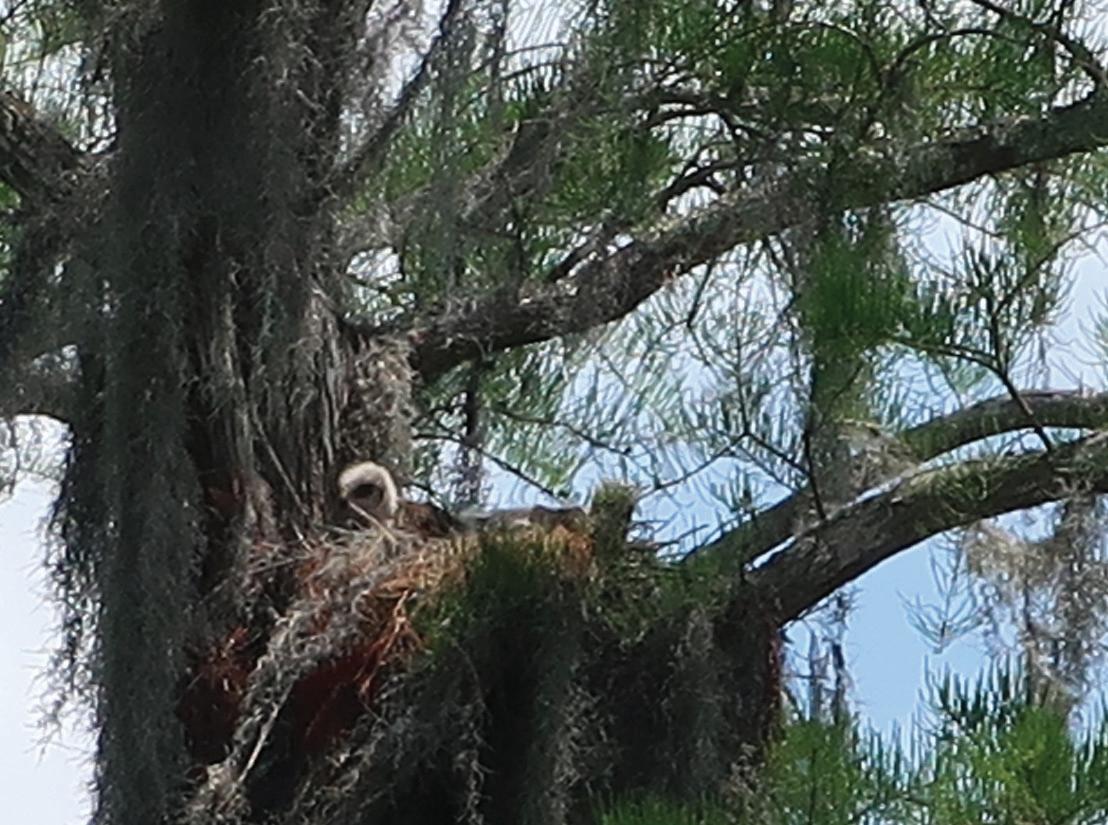
This Page, Top: Chip and Joy Campbell, owners of Okefenokee Adventures and my amazing guides for the day!
Bottom: Red-shouldered hawk chick (one of three) awaits the return of its parents. Photo by Joy Campbell


